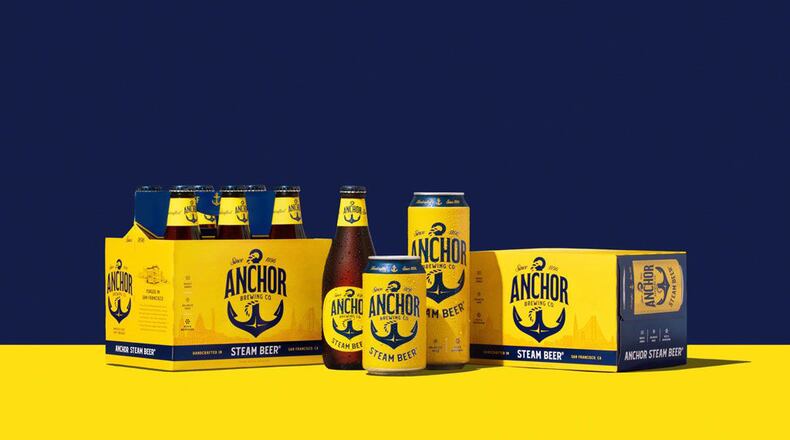It was big news when America’s oldest craft brewery, San Francisco’s Anchor Brewing Co., recently announced it would be celebrating its 125th anniversary in February with a major redesign of its packaging and branding.
The new look is said to reflect a “retro-modern aesthetic.” But the famous Popeye-like anchor is still on the labels and cartons. It just appears a little less iconic, and a little more generic.
That’s led to a backlash from some traditionalists, while others think a refresh is a good idea, and even long overdue — especially since the Japanese beer company Sapporo acquired Anchor in 2017.
I’ve always loved Anchor Steam Beer, a historic and unique West Coast style that dates back to 1896. In more modern times, it was first bottled in 1971.
I sipped my first Anchor Steam in the early 1980s, when a friend brought a few six-packs back from San Francisco. It was the first taste of “craft beer” for me, and for many others, in the long ago, late 20th century.
An ale-lager hybrid, it wasn’t like anything I’d ever tried. But I liked it a lot. And I still appreciate its copper color, fine balance of caramel malt and woody hops, and dryish finish. I also like the iconic “stubby” bottle shape, which feels easy to cradle in your hand.
As it turns out, this month also marks the return of Flagship February, which aims to celebrate “the beers that paved the way for today’s remarkable global beer market, or in other words, the flagship beers that got us here.”
Certainly, Anchor Steam qualifies, if any American beer does.
Another tenet of Flagship February is its response to the fact that so much beer barely resembles beer anymore. And, yes, I’m talking about the haze craze, pastry stouts, beer with Skittles, and even beer without alcohol.
Most of all, though, as the founders of Flagship February declare, “it seems to us that what leads people to drink a beer is less whether or not it’s good than it is whether it’s new or, better still, rare.”
By now, most historic breweries have given in, and are producing more one-off beers, adjunct beers that appeal to younger drinkers, and even drinkers who don’t often drink beer.
Anchor has several new beers that address that market set to debut by April, including Tropical Hazy IPA, Crisp Pilsner, and a 100-calorie, light golden ale with mango, called Little Weekend.
I’ll be looking forward to trying those, and just about anything else the brewery produces.
But thinking back, my favorite Anchor moment wasn’t the first time I tried Anchor Steam. It was the first time I visited the brewery on Mariposa Street in San Francisco.
The copper brewhouse, art deco architecture, inviting vintage taproom, and a brief encounter with Fritz Maytag, the man who saved the brewery from extinction in 1965, made it a most magical day.
About the Author
The Latest
Featured


